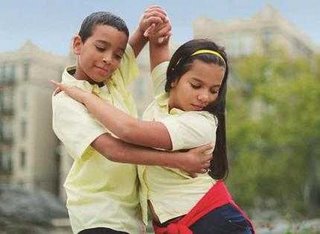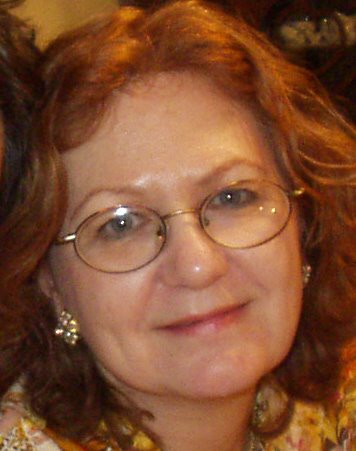Mad Hot Ballroom
 Last night was free movie night at the library. Mad Hot Ballroom was the offering, a documentary about a mandatory ballroom-dancing program in the New York City schools. The program is offered in the 5th grade, so the kids being forced to learn to dance are around eleven years old.
Last night was free movie night at the library. Mad Hot Ballroom was the offering, a documentary about a mandatory ballroom-dancing program in the New York City schools. The program is offered in the 5th grade, so the kids being forced to learn to dance are around eleven years old.Director Marilyn Agrelo and cinematographer Claudia Raschke followed students from three schools through the course and into the competition. Agrelo had the good instinct to have selected among her three schools the one which ended up taking the championshipship, which gave nice closure to an otherwise loosely-plotted story.
Thankfully, the movie contains no sappy voice-over narrative. There's a bit of moralizing from teachers about miraculous transformations, life lessons learned, and so on and on, but mostly it's just the kids, shuffling awkwardly in the gym, walking home from school, or sitting on beds and front stoops talking about the stuff that interests kids. If you've forgotten what it was like being a miserably self-conscious preteen, and you want to be reminded, this is the movie for you.
The best thing about the movie is Wilson Castillo, a Dominican boy with the face of an angel and a perpetual sweet smile. Wilson speaks virtually no English so he says almost nothing throughout the movie. But he dances with all the grace of a little Fred Astaire. All the kids from his PS 115 team are surprisingly good, but even if they hadn't been, Wilson could've taken the whole team to the top by himself.
I think it must come as a shock to most people who watch this film that kids from racially-diverse inner-city schools are so bright, thoughtful, and determined. These are the very kids whom, when they're just a couple of years older, most U.S. citizens would be afraid to pass on the street. Most of the reviews of Mad Hot Ballroom gush over what these kids learn from having to interact as "ladies and gentlemen" with each other. That's nothing compared to what Middle America learns from spending 105 minutes with them.


0 Comments:
Post a Comment
<< Home